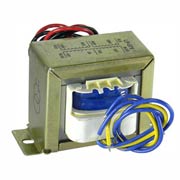inverter transformer manufacturers india
A Full Range Of ccfl inverter transformer, 24v to 12v converter, Single Phase Inverter Transformers, inverter duty transformer suppliers in africa, view 800va inverter transformer price
A transformer converts dc to ac or ac to dc. A 24v To 12v Converter is a regular transformer. But a 12v to 24v Dc to Ac Converter is actually called an inverter transformer. Current fed inverters are less common where the voltage fed inverter transformers are most used. In the early days when transformers were invented, they were used to step down or step up the AC voltages. So when the need for converting from DC to AC arose, the new types of transformers were created. Since these invert the original function, inverting DC into AC, these are called the inverter transformers.


inverter transformer manufacturers india

Inverter duty Transformer

24v To 12v Converter
12v to 220v inverter without transformer Exporter in india, Carries A Complete Line Of 240v to 12v converter, 220v to 12v converter, 12v to 24v dc to ac converter
Types and models
Inverter Transformer Manufacturers in India produce CCFL Inverter Transformer, Single Phase Inverter Transformers and Inverter Duty Transformer. If you look online for “inverter transformer buy online. you might end up with different prices. This is due to the different makes, varieties, types and usage cases of the transformers. An 800va Inverter Transformer Price will be different than a 500w inverter transformer price
The terminology can be confusing in times. A reference to a 12 volt to 220 volt converter is quite the same as 12v to 220v transformer, and it is a step up operation as the input voltage is low and the output is high. Whereas a 240v to 12v Converter is different as it brings the voltage down to output. The transformers are named with their outcomes. For example a constant voltage transformer 5kva has an output capacity of 5kva.
These in general can also be called as inverters or power inverters. They use their specific circuitry and design to produce the overall power handling, output frequency and output voltage based on the input voltage. Unlike the rectifiers which reduce AC to DC currents, the inverter transformer windings are different. They can contain completely electronic means or a combination of electrical and mechanical means. Static inverters don’t have any moving parts inside, but others can have a rotary apparatus that assists in the operation of the inverter.
The different types also serve different purposes. CCFL Inverter Transformer is used in cold cathode fluorescent lamp (CCFL) applications. They are small in size and have a higher efficiency over 80% and provide adjusted outputs to the light. Single Phase Inverter Transformers are used in UPS, power sources and renewable energy conversions. They come in either half bridge, full bridge or three level structures. Inverter duty transformer is something used as a set up transformer from the power source to the supply line. You can find all types of inverter transformers at Rajasthan Powergen Transformer P. Ltd.
The term inverter is related with a few distinctive electronic applications. In logic circuits inverter may be a logic inverter, the proportionate of a “Not” entryway. In simple signal processing, an inverter can be a circuit which alters the phase of the signal being transmitted. In power transformation applications an inverter is an electronic transformer which changes over power from a Direct Current (D.C.) source into Alternating Current (A.C.)
Power transformation inverters can be separated into two sub-categories, voltage-fed inverters and current-fed inverters.But ordinarily inverter does this change at a lower voltage. But electrical and electronical hardware require 110 volt or 220 volt AC for legitimate operation. Subsequently after the DC is changed over to AC in a inverter circuit, a Power transformer is utilized to step up this voltage to the next value(110 volt or 220 volt)

| Description | Max Ratings | Voltages | Standards |
| Solar Application Inverter Transformer | 5 MVA | Up to 36 kV | ANSI,IEC,IS |
| Converter Transformer | 5 MVA | Up to 36KV | ANSI,IEC,IS |
Types of Windings Used in Inverter Transformers
The following mentioned windings are layered type and either rectangular or round conductor.
- Cylindrical Windings:
- (a) Multi Layered Windings
- Helical Windings:
- (a) Single Helical Windings
- (b) Double Helical Windings
- (c) Disc- Helical Windings
- Multi- Layer Helical Windings
- Cross- Over Windings
- Disc and Continuous Disk Windings
- Aluminum Windings
Primary Winding Calculations
- Primary voltage = Vp = 230 V
- Primary current = I1= VA / Vp = 50 / 230 = 0.218
- Let transformer we are going to design is 95 % efficient so,
- I1 = VA/ (efficiency x Vp) = 0.23A
- Primary Current = 0.23 Amp (approx.)
Number of Turns:
Total number of turns = turns per volts x primary side voltage = 2.6 x 230 N1 = 600 turns (approximately)
Secondary Winding Calculations
- Secondary voltage = Vs = 12 V Secondary current = Is = VA/ Vs = 50 / 12 = 4.2 Amp (approx.)

Number of Turns:
Number of secondary turns = turns per volts x secondary volts
N2 = 2.6 x 12 = 32 turns (approx.)
Weight Estimation of Windings
For weight calculations, following steps will be followed:
- Approximate length of copper wire = perimeter of bobbin x number of turns
- Cross sectional Area of copper conductor
- Volume = Approximate length x Cross sectional area
- Mass = density of copper x Volume
| Used As | Inverter (Output) |
| Ratings | 50VA to 100KVA Short Duty or Continuous duty, CU & AL both options available. |
| Frequency | 50Hz to 1KHz Sine Wave, Square Wave or Modified Square Wave. Carrier Frequencies 3.2KHz, 6.4Khz, 12.8KHz etc. |
| inverter Transformer Manufacturers Export to | Bangladesh, Rwanda, Nigeria, Uganda, Nepal, Kenya, Malaysia Malawi Tanzania, India, Africa, |
| Voltage | Customer Specified, As per Batteries or System Voltages. |
For Final inverter transformer price india Please Mail Us on info@rajasthanpower.in
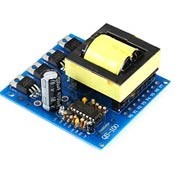
dc to ac converter transformer

5kva inverter transformer

inverter boost transformer
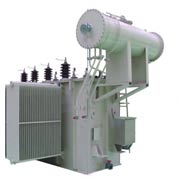
inverter transformer in solar plant
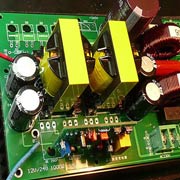
1000w inverter transformer
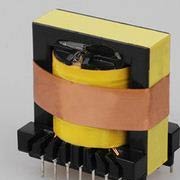
inverter ferrite transformer
The working of an inverter is, it changes over DC to AC, and these gadgets never produce any kind of power since the power is produced by the DC source. In a few circumstances like when the DC voltage is low at that point we cannot utilize the low DC voltage in a domestic apparatus. So due to this reason, an inverter can be utilized at whatever point we utilize solar power panel.
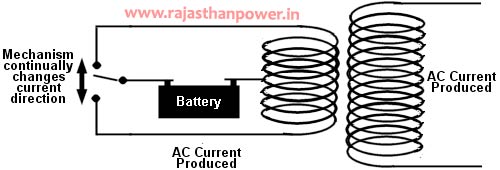
Inverters are classified into two type’s to be specific single phase and three phases
Single Phase Inverter
Single phase inverters are classified into two types to be specific half-bridge inverter & full bridge inverter
Half Bridge Inverter
The half-bridge inverter is an basic building block within the full bridge inverter. It can be built with two switches where each one of its capacitors incorporates an o/p voltage which is identical to Vdc2. Moreover, the switches adjust each other, in the event that one switch is actuated at that point naturally another switch will deactivate.
Full Bridge Inverter
The full-bridge inverter circuit converts direct current to alternate current. It can be accomplished by opening as well as closing the switches within the right arrangement. This type of inverter has different working states which depend on closed switches.
Three Phase Inverter
A three-phase inverter is utilized to change an input DC to a 3-phase output AC. Generally, its 3-arms are deferred with 120° of an angle to create a 3-phase AC supply. The inverter control which includes a 50% of the proportion as well as controlling can take put after each T/6 of the time T. The switches utilized within the inverter complement each other. The 3-single stage inverters place over the comparative DC source, and the post voltages inside a 3-phase inverter are comparable to the shaft voltages inside 1-phase half-bridge inverter. These inverters have two conduction modes such as 120°-mode of conduction & 180° mode of conduction.
India’s Largest Manufacturer Of 12v to 220v transformer, 12 volt to 220 volt converter, inverter duty transformer, 230v to 12v converter in mumbai
inverter transformer
Inverters eventually have only one work – take in DC current and turn it into AC current. In hypothesis, this can be exceptionally simple, since a straightforward switch and a few imaginative wiring can allow you an alternating square wave working at the frequency that you just flip the switch.But in reality, square waves are exceptionally harming to about all modern gadgets that depend on AC power.Oftentimes, inverters will too highlight a transformer. Typically done so that the AC voltage out can really be distinctive from the DC voltage in, depending on the number of coils on the primary and secondary winding.

There two common types of inverters:
Pure Sine Wave Inverter (PSW) – The output of a pure sine wave inverter is, you speculated it, a pure sine wave. It is exceptionally troublesome to realize a idealize sine wave as an output, and the designs to do so can be exceptionally complex.
Modified Sine Wave Inverter (MSW) – These can utilize thyristors, diodes and other passives that deliver a rounded-off square wave, and they really get exceptionally near to outputting a pure sine wave. Oftentimes, MSWs can be utilized for high power electromechanical hardware.
Converter transformer:
Converters moreover have as it were work, change over AC power to DC power. But the word “converter” is exceptionally bland, and you will regularly see it being utilized inaccurately. For illustration, in the event that somebody says “DC to AC converter,” that produces consistent sense indeed in spite of the fact that the proper wording is “DC to AC inverter.” The same contention can be made by saying “DC to DC converters.” AC to DC converters are moreover frequently referred to as power supplies.
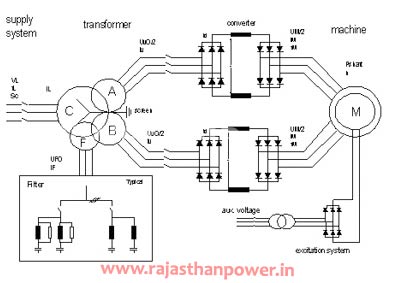
There are two common types of converters:
Half-wave rectifier – These are generally only utilized in low-power applications since their signal isn’t exceptionally uniform by nature. Since half of the AC signal is misplaced, the output sufficiency is generally 45% of the input amplitude, meaning that power is intensely squandered during the negative half-cycle of the input. Indeed when putting a expansive capacitor over the load, there’s still an excessive swell during the down cycle of the AC input.
Full-wave rectifier – Design engineers utilize a full-wave rectifier to combat this signal misfortune and to induce a much cleaner signal. They capture both positive and negative cycles of the AC source and are utilized for applications that require a steady and smooth DC voltage source.

Transformers are an electrical component that transmit electrical energy between at least two circuits. Transformers direct the voltage in circuits, but in a few cases these can go terrible and cause a circuit to not work.
- Prepare to measure the circuit voltages
- Confirm the proper input to the transformer.
- Measure the secondary output of the transformer
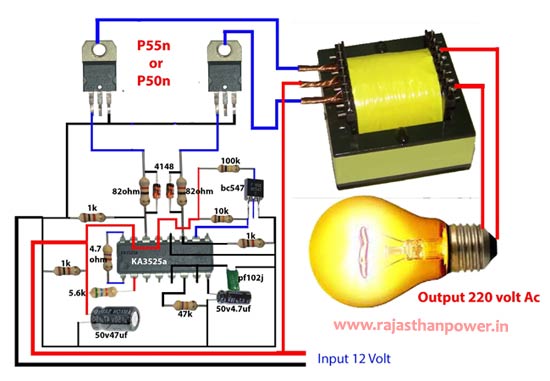
| HS Code | Description |
|---|---|
| 85049090 | Transformer – 225000144 – Trans Logic Mos 9a 200v D-Pac – Fai Fqd12n20 – Parts For Inverter |
| 85049090 | Inverter (Power Cell) Jesd-Mv2c12070 (7910251-13203) Other Electric Transformers, Static Converters. |
| 85049010 | Transformer For Sine Wave Inverter Xtm 2600-48 |
| 85044010 | 812455-450 Bat100 Island Grid Inverter / Battery Charger Island Grid (D Transformer) Serial Nos:Bat0100-0014, Bat0100-00 |
| 85043200 | Mir109-69060 Inverter Transformer 1023343 (Parts For Welding Systems) |
By efficiency, we are truly saying, what rate of the control that goes into the inverter comes out as usable AC current (nothing is ever 100% effective, there will continuously be a few misfortunes within the framework). This effectiveness figure will shift agreeing to how much power is being utilized at the time, with the efficiency for the most part being more prominent when more control is used.
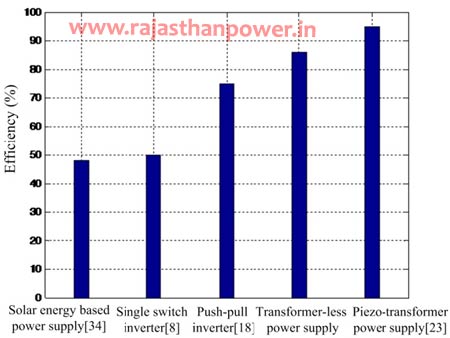
Efficiency may shift from something fair over 50% when a stream of control is being utilized, to something over 90% when the output is approaching the inverters appraised output. An inverter will utilize a few power from your batteries even after you are not drawing any AC power from it. This results within the low efficiencies at low control levels.
Bigger inverters will generally have a facility that can be named a "Sleep Mode" to extend generally productivity. This includes a sensor within the inverter sensing in case AC power is required. If not, it’ll viably switch the inverter off, proceeding to sense if power is required. A little 200W inverter may on the other hand only draw 25 watts from the battery to allow an AC output of 20 watts, resulting in an efficiency of 80%.
- Home UPS
- On-Line or Off-Line UPS Systems
- UPS Systems for Balanced or Un-Balanced Loads
- Machines
- ARD (Automatic Rescue Device used in Passenger Lifts)
- Solar Inverters

For core designing a transformer, we need:
- Power rating
- Voltage levels (primary and secondary)
- Currents on both sides
- Primary and secondary coils wire diameter/size
- Iron Core area
- Numbers of turns (primary and secondary)
|
transformer based inverter
|
transformerless inverter
|
| Conventional inverters are built with an internal transformer that synchronizes the DC voltage with the AC output. | Transformerless (TL) inverters use a computerized multi-step process and electronic components to convert DC to high frequency AC, back to DC, and ultimately to standard-frequency AC. |
Electrical transformers can be classified into different categories depending upon Construction, their end-use, supply and purpose.
On the Basis of Design
- Core Type inverter Transformers
- Shell Type inverter Transformers
On the Basis of Supply
- Single Phase inverter Transformers
- Three Phase inverter Transformers
On the Basis of Purpose
- Step Up inverter Transformers
- Step Down inverter Transformers
On the Basis of Use
- Power inverter transformers
- Distribution inverter transformers
- Instrument transformers
- Current inverter transformers
- Potential inverter transformers
On the Basis of Cooling
- Self-Cooled Oil-Filled inverter Transformers
- Water-Cooled Oil-Filled inverter Transformers
- Air-Cooled (Air Blast) inverter Transformers
Transformers form the foremost critical connect between supply systems and load. Transformer’s productivity specifically influences its execution and maturing. The transformer’s efficiency, in common, is within the extend of 95 – 99 %. For huge control transformers with exceptionally low misfortunes, the productivity can be as high as 99.7%. So for the reason of effectiveness calculations, OC and SC tests are used to calculate appraised core and winding misfortunes within the transformer.
The efficiency of Power transformers is simply given as:
![]()
|
|





